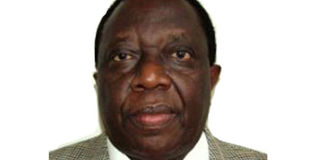Decentralisation was derailed almost from the beginning

William G Naggaga
What you need to know:
- Sad reality. The old Bukedi District, which was by far the best example of a multi-ethnic district in Uganda, now has a multiplicity of districts corresponding to its major tribes.
The government embarked on a decentralisation policy, following the adoption of the 1995 constitution. Actually decentralisation was incorporated in the Constitution as a ‘substitute’ to federalism which, according to the Justice Odoki Commission, was the preferred form of governance by most Ugandans.
Bidandi Ssali, the then minister for Local Government and the architect of the policy, attempted to assuage Ugandans that there was no difference between decentralisation and federalism. I don’t know if the veteran politician still holds the same beliefs although I very much doubt it.
Soon after he parted with NRM over the lifting of presidential term limits in 2005, I remember Bidandi was quoted as saying decentralisation had departed from its original course and had failed to achieve its intended purpose of bringing services closer to the people.
By balkanising the country into mini-districts, now exceeding 130, decentralisation has blown administrative costs out of proportion, while promoting ethnic divisions among the people of Uganda. It has created a scramble for the administrative and political posts that come with the creation of new districts without adding any tangible value to service delivery.
If anything, services to the people have further deteriorated and all the money sent by the centre to these districts (which are almost totally dependent on the central government), is all swallowed up by the gluttonous district bosses. They have abandoned any pretence to service delivery and substituted it with political expediency. It is inconceivable that government has created districts in places which didn’t have any basic infrastructures like roads, hospitals, towns, police posts, office buildings, schools, etc.
Districts should be created following rational criteria like population growth, economic dynamics, etc, and not as political rewards for “voting correctly’’. The craze for new districts has actually created more divisions among people who once lived in peace for centuries by erecting artificial or imaginary barriers. The old Sebei district, for instance, which was already small, has been carved up into three mini districts. The old Bukedi District, which was by far the best example of a multi-ethnic district in Uganda, now has a multiplicity of districts corresponding to its major tribes, with some ethnic groups having more than one district.
The conflict between the Iteso and Jopadhola over Tororo town is the most recent sad episode in this saga, which necessitated the sending of a delegation to London to examine colonial maps to determine the status of the town! The two tribes have for centuries lived side by side peacefully in this strategic border town in eastern Uganda until this ‘district -mania’ put them on a collision course.
Speaker of Parliament Rebecca Kadaga has called for review of the decentralisation policy, given that in 23 years of its existence, it has not done what it was supposed to do. According to the First Deputy Premier, Gen Moses Ali, “we have realised that funds which were sent for development are diverted by district officials.’’ This is a big indictment of a policy which many of us realised a long time ago that it was ill-conceived.
The Daily Monitor in its editorial of June 25, rightly demanded that the review should begin with “full accountability of funds disbursed from the centre to local government as well as the local revenue collected’’. This is a ‘tall order’, given the government’s poor record of accountability even within its own ministries and parastatal bodies.
It is time to accept that decentralisation has failed miserably and should be abandoned. No amount of tinkering or review will give it new life. Uganda needs to try something new, which it has ‘evaded’ for decades ie, federalism. Our neighbours in Kenya were also afraid of federalism. It took 47 years - from 1963 to 2010, for federalism to be adopted in the new 2010 Constitution.
Neither Jomo Kenyatta nor his successor Daniel arap Moi, wanted it. It was left to Mwai Kibaki, Kenya’s third President to ‘take the bull by the horns’ and endorse the peoples wishes that power be shared between the central government and the 47 county governments. Of course federalism is no panacea and Kenya still has problems to overcome, but it has made a step in the right direction. Uganda too create its own model of federalism to fit its situation.
Mr Naggaga is an economist, administrator and retired ambassador.
[email protected]




